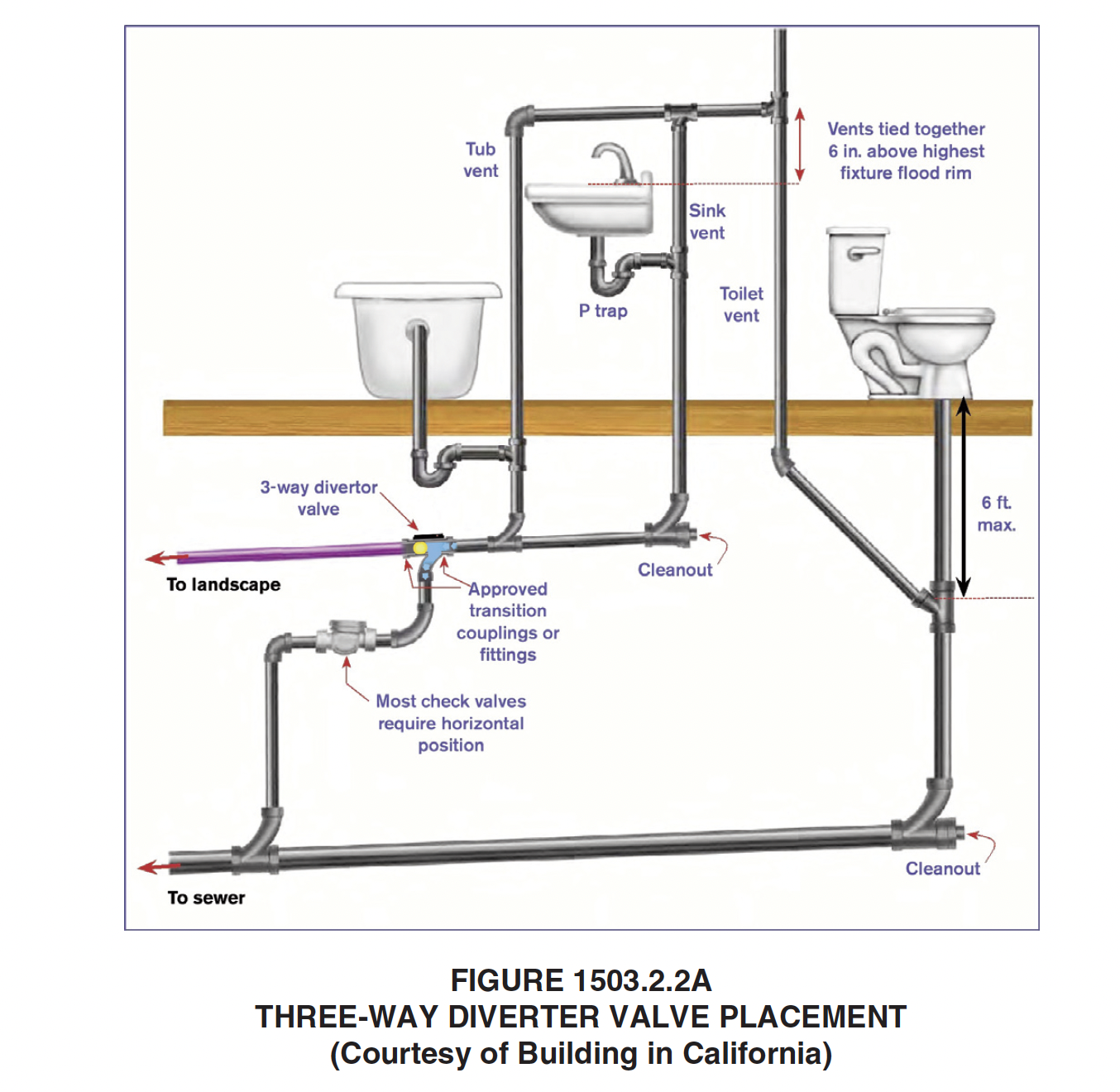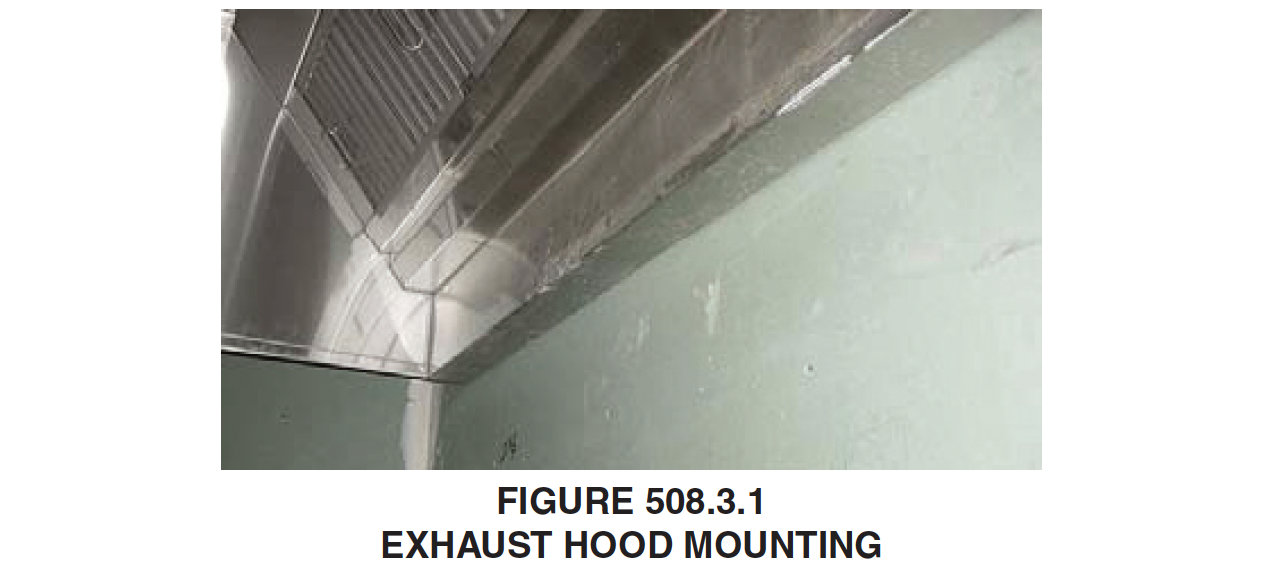March 21, 2024

From the 2024 UPC Illustrated Training Manual, Chapter 15 – ALTERNATE WATER SOURCES FOR NONPOTABLE APPLICATIONS
1503.2.2 Diversion. The gray water system shall connect to the sanitary drainage system downstream of fixture traps and vent connections through a gray water diverter valve. The gray water diverter valve shall comply with IAPMO PS 59 and be installed in an accessible location and clearly indicate the direction of flow.
Gray water diverter valves are required to divert the gray water to the sanitary drainage when either the gray water is not needed (e.g. plant dormancy, rainy periods or winter season), or when the gray water is hazardous, containing unhealthy contaminants (e.g. hair dye, pesticides, herbicides, cleaning chemicals, solvents, toxins, medications, etc.). IAPMO PS 59 requires diverter valves to be accessible. An electronic actuator may be included to allow for a switch inside the dwelling to control the valve. See Figure 1503.2.2a for a proper placement of a 3-way diverter valve.

A common type of valve being used incorrectly for greywater diversion are pool and spa diverter valves. These valves have ridges, pockets, 90 degree changes in direction and other aspects that promote the capture of solids in the valve body. These captured solids can foul and compromise the health and safety of the public. Only diverter valves that comply with IAPMO PS 59 shall be used (see Figure 1503.2.2b).

From the 2024 UMC Illustrated Training Manual, Chapter 5 – EXHAUST SYSTEMS
508.3.1 Grease Vapor. Wall-mounted exhaust hood assemblies shall be tight fitting against the back wall so as to not permit passage of grease vapor behind the hood, or between the back wall and the hood assembly. [NFPA 96:5.1.13]
Type I hoods require a 3-inch separation from limited combustible material. This air space is commonly built into the back of a hood. Hoods lacking this air space need to be flashed to the wall on the sides and bottom (see Figure 508.3.1).

(This is not to be considered the official position of IAPMO, nor is it an official interpretation of the Codes.)

IAPMO
IAPMO develops and publishes the Uniform Plumbing Code®,the most widely recognized code of practice used by the plumbing industry worldwide; Uniform Mechanical Code®; Uniform Swimming Pool, Spa and Hot Tub Code®; and Uniform Solar Energy, Hydronics and Geothermal Code™ — the only plumbing, mechanical, solar energy and swimming pool codes designated by ANSI as American National Standards — and the Water Efficiency Standard (WE-Stand)™. IAPMO works with government, contractors, labor force, and manufacturers to produce product standards, technical manuals, personnel certification/educational programs and additional resources in order to meet the ever-evolving demands of the industry in protecting public health and safety.
Last modified: March 21, 2024
